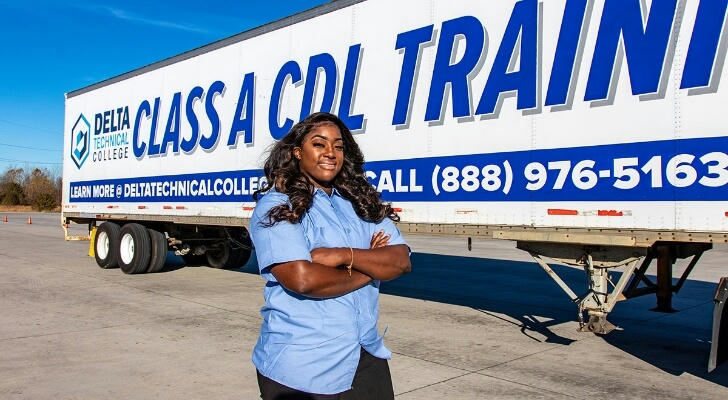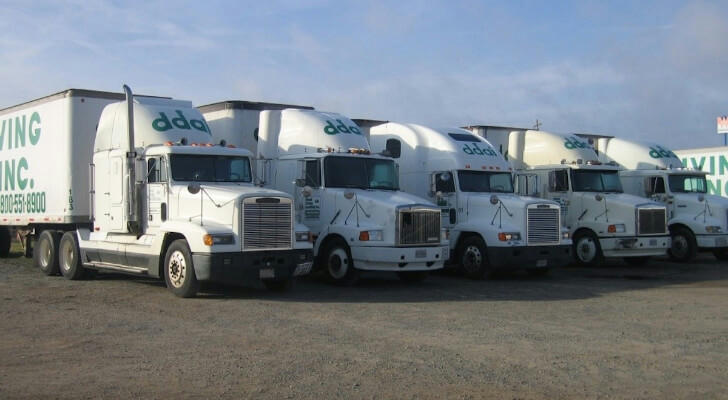Analysis of CDL Training Courses in the U.S.: The Essential Path for Professional Drivers
In the United States, the Commercial Driver’s License (CDL) is a "golden ticket" to enter the freight, passenger transport, and specialized transportation industries. According to the American Trucking Associations (ATA), the truck driver shortage in the U.S. reached 80,000 in 2023, highlighting the high demand for professional drivers. This article breaks down the core elements of CDL training through real-life examples and practical advice.

1. CDL Classifications and Career Path Cases
Case 1: From Warehouse Worker to Long-Haul Truck Driver (Class A)
Mark Wilson worked as a forklift operator at a warehouse center, earning $32,000 per year. To increase his income, he enrolled in a Class A training course to learn how to drive a 48,000-pound semi-truck. After six weeks of training (including 160 hours of hands-on practice), he passed the reverse maneuver test and highway driving training, eventually obtaining his CDL certification in Texas. He was hired by a regional logistics company with a salary increase to $56,000.
Advice:
Choose heavy equipment directions: Class A holders can drive tractor-trailers, flatbed trailers, etc., ideal for those seeking high salaries and interstate opportunities.
Focus on company-sponsored programs: Companies like Swift Transportation and Schneider offer "training-employment" bundle programs that can reduce tuition costs.
Case 2: A Single Mother’s Transition to School Bus Driver (Class C + P Certification)
Elisa Rodriguez, a former convenience store manager, wanted a job that allowed her to balance her work schedule with caring for her children. She chose to obtain a Class C license with a passenger (P) endorsement. After completing 80 hours of training in Florida, where she learned emergency evacuation procedures and student behavior management, she became a full-time school bus driver for a school district, enjoying public school holidays and health insurance benefits.
Advice:
Consider stable jobs: School bus drivers and municipal bus drivers typically enjoy union protections and fixed working hours, making them ideal for those balancing family life.
Strengthen soft skills: Passenger endorsements require additional training in conflict resolution and passenger safety communication strategies.

2. Key Points of CDL Training and Pitfalls to Avoid
1. Theory Classes: In-Depth Knowledge of Regulations and Techniques
Case Example: A California student was disqualified from the road test for incorrectly calculating driving hours due to a misunderstanding of the Federal Hours of Service (HOS) regulations.
Practical Advice:
Use official materials: The FMCSA's “CDL Manual” covers state-specific regulations.
Take practice tests: Platforms like CDL Practice Tests.org provide updated question banks for each state.
2. Hands-on Training: From Pre-trip Inspections to Complex Road Conditions
Case Example: An Arizona student failed a simulated exam because they neglected to check tire pressure, leading to a vehicle rollover.
Practical Advice:
Practice the "7-step inspection": From engine oil levels to fifth-wheel coupling devices, establish a standardized inspection routine.
Rent training grounds: Some driving schools offer hourly rentals for nighttime training, perfect for reinforcing reversing and coupling skills.
3. Test Strategies: Avoid Common Mistakes
Data Support: The CDL road test pass rate was only 68% in 2022. Common mistakes included "parking on a hill more than 30 cm" and "not checking blind spots when changing lanes."
Practical Advice:
Record practice sessions: Analyze steering angles and rearview mirror habits by reviewing videos.
Familiarize yourself with the testing route: Some DMVs provide maps of test areas, allowing targeted training on turning techniques and speed control.

3. Career Advancement Pathways
Case 3: Hazardous Materials Transport Driver’s Salary Boost
James Carter was a Class B garbage truck driver, earning $43,000 per year. To break through his career ceiling, he obtained additional endorsements for hazardous materials (H) and tankers (N), studying chemical spill emergency response and static electricity prevention. He is now transporting liquefied natural gas for an energy company in Texas, with a salary increase to $82,000 and full occupational liability insurance provided by the company.
Industry Advice:
- Focus on high-value fields:
Hazardous materials transportation: Requires TSA background checks, but offers salaries 35%-50% higher than regular freight.
Cold chain logistics: Mastering temperature-controlled equipment maintenance skills can unlock additional technical stipends.
- Build a professional network:
Join industry organizations: The American Trucking Associations (ATA) provides free safety training resources and job fairs.
Obtain advanced certifications: A “TWIC Transportation Worker Identification Credential” can unlock port freight qualifications.
4. Resource Selection and Long-Term Planning
Pitfall Alerts:
Avoid non-FMCSA certified institutions: In 2023, a “fast-track class” in Colorado had its certification revoked for violating training hour requirements, causing students' results to be invalid.
Be cautious of hidden fees: Some institutions advertise low tuition fees (e.g., $1,999) but require mandatory purchases like driving log software ($500/year).
Recommended Resources:
Public community colleges: Wake Tech Community College in North Carolina offers VA educational benefits for reimbursement.
Industry union resources: The Teamsters Union provides free practice exams and legal consulting services for members.
Conclusion
CDL training is fundamentally about developing risk management skills and professional competence. By focusing on targeted case studies and systematic resource integration, participants can not only pass the exam but also build long-term career competitiveness. It is recommended that those interested prioritize institutions equipped with modern simulators (like VR emergency braking training) and regularly attend FMCSA safety workshops to stay updated on industry knowledge.
